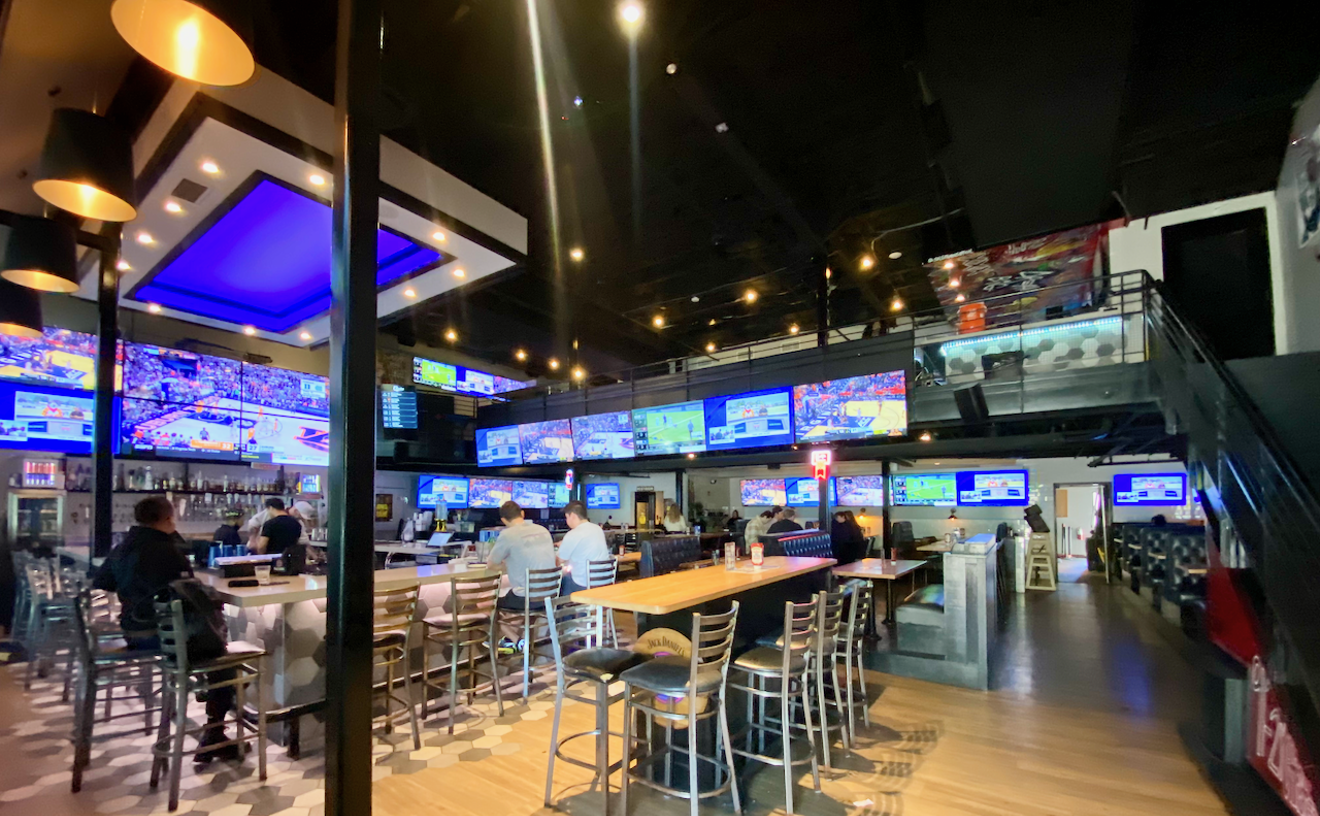Every time I visit Sushi Bayashi, the Japanese movie Tampopo jump-kicks into my brain. I think it's partly because the restaurant's locale, Phil Romano's Trinity Groves, was built on a desolate patch of dust that subtly recalls the landscape of so many Western movie scenes. It's especially apparent if you're crossing the Calatrava Bridge to get there and the sun is falling as you drive.
Jûzô Itami's classic film features a widow named Tampopo, who's struggling to keep her late husband's noodle shop afloat. A cast of unlikely aides, including a gastronomic hobo and a truck driver, help out as she works to perfect every aspect of her soup recipe, from broth to noodles to toppings. The movie is filled with stunning food imagery and closely mimics elements of classic Westerns. Which brings me back to Sushi Bayashi.
The collaborative effort between tycoon Phil Romano and former Kenichi chef Yuki Hirabayashi hopes to offer what they describe as a casual sushi experience. They filled the dining room with blond woodwork, hung tapestries from the high ceilings and filled shelves and other spaces with art and Japanese knickknacks. Large communal tables grace the dining room in rows, and they're echoed again out on the patio, where more pinewood is quietly lit from above by fixtures dressed in white drum-shades. Visually, it's one of the most convincing spaces in Trinity Groves.
I'm not sure how Tom Petty's "Free Fallin'" is meant to fit into the decor -- maybe that's the casual part -- but classic rock often pours from the restaurant speakers, doing little to conjure the streets of Tokyo. There's also a design flaw at the bar, such that customers are seated very low compared with the sushi case. You can't see the fish. You can't even see your chef. When my server became inattentive, I wondered if those paper sushi-slips were supposed to be crumpled up and submitted via hook shot. If you can't interact with the chefs and discuss what cuts are looking good that day, there's not much reason to sit there.
The sushi looks a lot like what cowboys might prepare, given a side of tuna and a rusty blade. Pieces were jagged at times, and often massive. A seaweed cup filled with uni made my cheeks puff out when I chewed. The sushi was also poorly assembled. On one evening my rice was unseasoned and dry; one piece completely fell apart as I picked it up. On another, it was perfect. Hand rolls arrived like misshapen ice cream cones -- there was so much fish I decided to discard a small scoop before eating. A seared bonita listed as a special on the chalkboard wall behind the bar was good, but for the most part, the sushi lacked vibrancy.
Not so with the agedashi tofu. If Sushi Bayashi does anything to capture the energy of Japanese street food, it's with the deep fryer. Two near-perfect cubes sit in a glistening pool of savory mushroom broth. Take a bite and that crunchy exterior yields to a curd with a moist and custardy texture. It's a great snack. Octopus croquettes are just as appealing, with a similarly greaseless and crunchy crust concealing discs of octopus and green onion. The curry katsu; the fried gizzards: You can't go wrong if it comes out of the fryer here.
The soup is a little harder to get excited about. You could order the tonkatsu ramen, but it's the same pork-bone broth garnished with sliced pork belly, bean sprouts and a soft-boiled egg that you've had at every other ramen-serving restaurant in Dallas. There is nothing unique or stylish that says this is Hirabayashi's soup, or even that this bowl is special.
Tampopo experienced the same problem as she got closer to her final ramen recipe. Her soup was good, her friends told her, but it lacked depth and character. She solved the problem with a garnish of lightly fried, shredded pork and onions, and sesame oil, which added another layer of flavor to the soup that literally lit up the movie set. Tampopo, both the restaurant and chef, were changed forever.
The closest you'll come to a transformative experience at Bayashi is in the chanpon noodle soup. The broth is enriched with soy milk, and it's filled with cabbage, mushrooms, shrimp and fish cake. Here's a bowl with guts. It's the sort of kitchen-sink soup you'd make with whatever you have on hand, and it's infinitely more memorable than just-another-bowl-of-ramen.
There's a kabocha dish that's interesting, too, so long as it's not cooked to mush. The squash is simmered in soy sauce, sake and mirin, which slowly reduces and thickens. Ground chicken adds a savory component that balances the sweetness of the squash. It's hard to get excited about Bayashi as a sushi destination when there are so many superior restaurants already established in Dallas. But it's easier to see large groups nibbling on salty, fatty snacks and taking big pulls off of Sapporo bottles, especially out on that expansive patio when the weather is nice. The soups will do in a pinch, but they won't leave you with any lasting memories. The sushi could leave a bad taste in your mouth.
Whatever you decide to do with your time should you come here, save some space for the monaka ice cream for your finish. Picture those vanilla wafer cookies you could eat 17 of in a sitting when you were a kid, and then replace that chalky, sugary filling with layered sweet bean paste and green tea ice cream. The cookies are pressed into flower shapes, making the dessert as attractive as it is delicious. It's by far the best way to end your meal here.
Don't get seduced by the sweet udon, which your server may compare to the funnel cakes that perfume the State Fair. The fried noodles are doused in powdered sugar just like Big Tex's favorite confection, but the comparison withers the second you wrangle a noodle free with your chopsticks. The fried noodles are tough, dry and the last thing you want to experience when the credits roll and the check hits the table. Tampopo may have gotten her happy ending, but with tepid dishes like these, Sushi Bayashi will likely leave you with mixed feelings as you ride off into the sunset.
Sushi Bayashi 3011 Gulden Lane, No. 106, 972-684-5906, sushibayashi.com, 11:00 a.m.-2:30 p.m., 5 p.m.-9 p.m. Sunday-Monday, 11:00 a.m.-2:30 p.m., 5 p.m.-10 p.m. Tuesday-Thursday, 11:00 a.m.-2:30 p.m., 5 p.m.- 11 p.m. Friday-Saturday, $$$
Agedashi tofu $5.50 Japanese pumpkin $6 Katsu curry $12 Gyoza $8 Monaka ice cream $8










